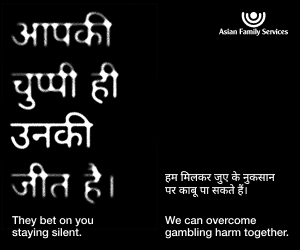Covid 19: It’s time for relentless positivity

New Zealand might be sitting on the tip of an iceberg with the slow but definite rise in numbers of coronavirus infected peoples, but despite any obvious inclination towards panicking - it’s time for relentless positivity.
The social media is gradually becoming abuzz with a seemingly alarming demand of completely shutting down the borders barring New Zealand citizens and residents, creating more panic than calm, needed to get through the unprecedented situation we all find ourselves during current times.
It might not be a good use of the social media, while others around the world are innovating to use social media to form virtual communities that can support each other, especially when forced in isolation and social-distancing.
Experiences from China – a country being so richly adulated by several media commentators for their strong-arm tactics in enforcing complete lock down – have shown the world how their popular social media platform WeChat have helped communities in distress during the outbreak of epidemic in various ways, including the facilitation of remotely working.
Clearly, it comes down to our “choice” where we want to put our “minds” and focus.” However, when we see mindless hoarding of the normal household goods, despite repeated assurances from none other than Prime Minister but also popular supermarkets then we are demonstrating that many amongst us are too crippled by fear to make rational, logical choices, and remain calm, and also see the bigger picture
Anyway, one cannot get through the global pandemic by hoarding products alone; they would rather need the support of “others” in every step of this arduous journey.
Importantly, people are being too shortsighted to miss the bigger picture during the current the critical times – it is critical not just because of being the tip of the iceberg – but it is critical because our individual and collective choices will determine how unscathed we remain when we emerge on the other side of the global pandemic.
See the numbers; more people are recovering than losing lives
While, undoubtedly, the number of people infected globally with the coronavirus and those who eventually lost their lives – about 200,000 and 8000 respectively - sets the panic, there is a promising number of around 83,000 people who had successfully recovered that is being missed and underappreciated.
It is important that people do not lose sight and ensure that their actions are driven by this latter, encouraging numbers, and not the earlier ones.
Understand the difference between lethality, and the speed of spread, of virus
The novel coronavirus, popularly known as Covid-19 belongs to the same family of coronaviruses that caused SARS (Severe Acute Respiratory Syndrome) outbreak in 2003.
COVID-19 and SARS both come from the same family of coronaviruses and have similar symptoms, and experts believe have different levels of “lethality” and “transmissibility.”
While SARS had a much higher rate of fatality (at 10 per cent), it transmissibility (the rate of being transmitted to other persons) was comparatively low, thus despite being fatal was less likely to be spread across the communities.
Covid-19, on the other hand, has transmissibility of 2 to 3 (every infected person can further spread to 2 to 3 person), which makes it alarming for its ability to spread across communities. However, comparatively has lesser lethality than that of SARS virus.
This information, although not significantly soothing when the societies have already come under the grips of community-spread, like in Italy, can be, however, vital for societies like New Zealand, where no single case of community-spread has been reported so far.
Armed with this knowledge, we as an informed citizenry can do everything in our control to rigorously implement “social-distancing” and “self-isolation” and eventually contribute to “flattening the curve.”
Complete lockdown is last, desperate measure
A complete lockdown, including those of international borders, is a desperate last-ditch measure that should be reserved as the last effort once we have exhausted all other viable options.
Such lockdowns can further escalate the already in-action financial downturn that can very quickly precipitate cascading effect on business-failures resulting in a huge number of job losses.
Eventually, our primary goal at the moment is to “flatten the curve” – that means – reducing the potential risk of the actual numbers of people infected from Covid-19 to escalate at an excessively high level where they cannot be served and supported by our existing level of the health system.
This can be achieved by remaining calm and maintaining social distance and implementing self-isolation.
Despite obvious temptations, we need not to act in fear, but act with confidence, and armed with the knowledge that a well-implemented “social-distancing” and “self-isolation” can help us through this difficult phase.
New Zealand might be sitting on the tip of an iceberg with the slow but definite rise in numbers of coronavirus infected peoples, but despite any obvious inclination towards panicking - it’s time for relentless positivity.
The social media is gradually becoming abuzz with a seemingly alarming...
New Zealand might be sitting on the tip of an iceberg with the slow but definite rise in numbers of coronavirus infected peoples, but despite any obvious inclination towards panicking - it’s time for relentless positivity.
The social media is gradually becoming abuzz with a seemingly alarming demand of completely shutting down the borders barring New Zealand citizens and residents, creating more panic than calm, needed to get through the unprecedented situation we all find ourselves during current times.
It might not be a good use of the social media, while others around the world are innovating to use social media to form virtual communities that can support each other, especially when forced in isolation and social-distancing.
Experiences from China – a country being so richly adulated by several media commentators for their strong-arm tactics in enforcing complete lock down – have shown the world how their popular social media platform WeChat have helped communities in distress during the outbreak of epidemic in various ways, including the facilitation of remotely working.
Clearly, it comes down to our “choice” where we want to put our “minds” and focus.” However, when we see mindless hoarding of the normal household goods, despite repeated assurances from none other than Prime Minister but also popular supermarkets then we are demonstrating that many amongst us are too crippled by fear to make rational, logical choices, and remain calm, and also see the bigger picture
Anyway, one cannot get through the global pandemic by hoarding products alone; they would rather need the support of “others” in every step of this arduous journey.
Importantly, people are being too shortsighted to miss the bigger picture during the current the critical times – it is critical not just because of being the tip of the iceberg – but it is critical because our individual and collective choices will determine how unscathed we remain when we emerge on the other side of the global pandemic.
See the numbers; more people are recovering than losing lives
While, undoubtedly, the number of people infected globally with the coronavirus and those who eventually lost their lives – about 200,000 and 8000 respectively - sets the panic, there is a promising number of around 83,000 people who had successfully recovered that is being missed and underappreciated.
It is important that people do not lose sight and ensure that their actions are driven by this latter, encouraging numbers, and not the earlier ones.
Understand the difference between lethality, and the speed of spread, of virus
The novel coronavirus, popularly known as Covid-19 belongs to the same family of coronaviruses that caused SARS (Severe Acute Respiratory Syndrome) outbreak in 2003.
COVID-19 and SARS both come from the same family of coronaviruses and have similar symptoms, and experts believe have different levels of “lethality” and “transmissibility.”
While SARS had a much higher rate of fatality (at 10 per cent), it transmissibility (the rate of being transmitted to other persons) was comparatively low, thus despite being fatal was less likely to be spread across the communities.
Covid-19, on the other hand, has transmissibility of 2 to 3 (every infected person can further spread to 2 to 3 person), which makes it alarming for its ability to spread across communities. However, comparatively has lesser lethality than that of SARS virus.
This information, although not significantly soothing when the societies have already come under the grips of community-spread, like in Italy, can be, however, vital for societies like New Zealand, where no single case of community-spread has been reported so far.
Armed with this knowledge, we as an informed citizenry can do everything in our control to rigorously implement “social-distancing” and “self-isolation” and eventually contribute to “flattening the curve.”
Complete lockdown is last, desperate measure
A complete lockdown, including those of international borders, is a desperate last-ditch measure that should be reserved as the last effort once we have exhausted all other viable options.
Such lockdowns can further escalate the already in-action financial downturn that can very quickly precipitate cascading effect on business-failures resulting in a huge number of job losses.
Eventually, our primary goal at the moment is to “flatten the curve” – that means – reducing the potential risk of the actual numbers of people infected from Covid-19 to escalate at an excessively high level where they cannot be served and supported by our existing level of the health system.
This can be achieved by remaining calm and maintaining social distance and implementing self-isolation.
Despite obvious temptations, we need not to act in fear, but act with confidence, and armed with the knowledge that a well-implemented “social-distancing” and “self-isolation” can help us through this difficult phase.









Leave a Comment